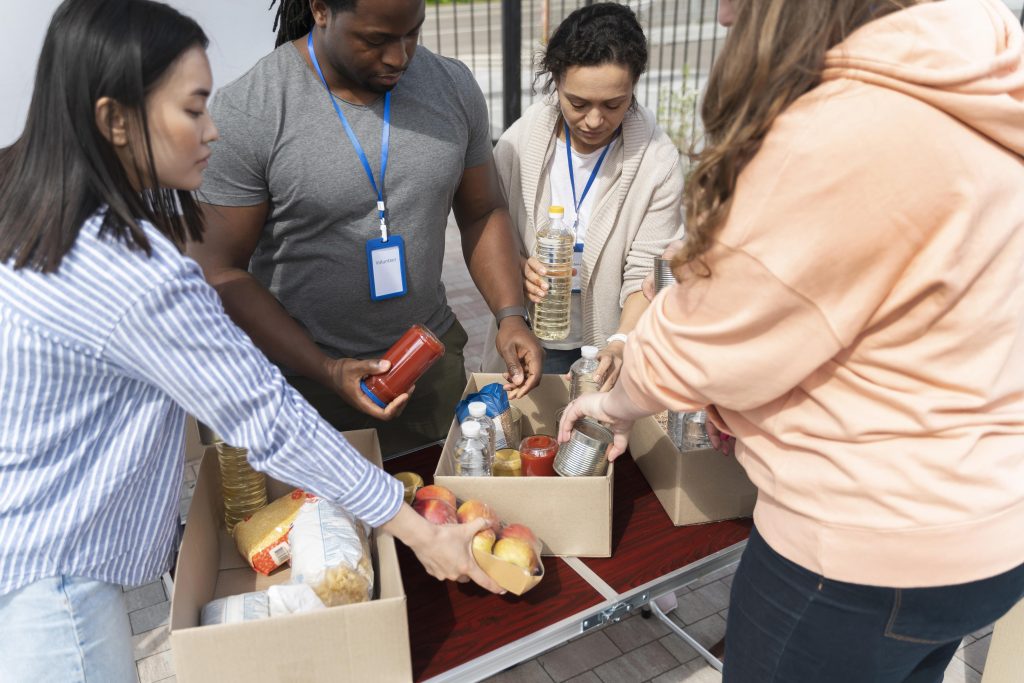To paraphrase: “Social media isn’t just a place to watch puppy videos and read boring status updates from friends and relatives.” The nonprofit sector will increasingly rely on these kinds of communications. Almost half of all people who have access to the Internet use it for social media. As a result, non-governmental organisations (NGOs) may use social media to reach new groups of donors, volunteers, and other interested parties. The average adult spends at least two hours every day on social media, providing a prime opportunity for charities to spread their message and gain exposure.
Charity organisations are increasingly relying on social media campaigns to increase their visibility and financial support.
Nonprofits can learn a great deal from engaging in deep conversations with their target audiences about the problems that matter to them. For this purpose, non-governmental organisations (NGOs) are more resourceful in their use of social media to disseminate information and enlist support. Therefore, many charitable organisations leverage social media to build rapport with their target demographic, increase awareness, and monetize their missions. Charities have started using social media platforms like Facebook, Instagram, and Twitter to reach out to the public and take advantage of the average 2.5 hours per day that people spend on these platforms. The percentage of Internet users who use this method is 69%. Managing your nonprofit’s social media accounts is time well spent if you want to grow your donor base and gain traction for your cause. This is time well spent, I assure you.

Why is it important for your nonprofit to have a social media presence.
Donations are more likely to come from those who are already talking about your cause online. Your passionate appeal to a fan’s “purchasing decisions” may or may not result in that fan making a donation to charity. Conversations with potential donors via social media may help raise funds quickly and efficiently. Getting in touch with influential people in your specific field might help you get the word out and get noticed. Many groups and charities are turning to social media to help fundraise for their initiatives. Is your cause trending on social media like Twitter and Facebook? Gather your loved ones and ask them to help out a good cause with a donation. Millions of pounds being raised through social media is not a new phenomenon. Over $1 billion has been raised through Facebook fundraisers since the function launched in 2015. By mobilising your audience and asking for donations to a great cause, you may make a strong statement and inspire real change. With the power of the collective and the tools provided by social media, people can effect change in the world for the better.
The proliferation of social media
Currently, there are over 20 million Facebook users who have either contributed to or launched their own fundraising page. Using platforms like Facebook, Instagram, Twitter, etc to raise money for charitable purposes has been proven to be a very effective strategy. Do something useful with it to benefit your nonprofit. This exemplifies the power of social media in motivating people to donate to charities and raise funds for worthy causes. The Givey platform has allowed fundraisers to come up with novel ways to raise money for charity, which has improved the effectiveness of fundraising and public relations campaigns. Learn more about how our service can boost your social media fundraising on Twitter, Instagram, and beyond. Even though Twitter and Instagram don’t provide a dedicated “fundraising” API as Facebook does, they may still be useful in bringing in money for your cause. Hashtags can let your organisation join in on global giving days like Giving Tuesday and Big Give.
The proliferation of social media has greatly increased one’s potential readership as well as the number of people who could potentially contribute to or work on one’s project. If you use social media to tell your organisation’s story in a compelling way, you’ll reach more people and inspire them to take action. Please put this resource to good use! Spread the word on the internet about who needs help and who can give it. Publish moving images and testimonials from relieved volunteers. Tell the tale of someone whose life you have impacted. Giving your charity a human touch like this will help your audience feel more connected to the cause and see how their donations are making a difference.
This may inspire others to adopt similar measures in their own communities. Explains the benefits of volunteering from both the volunteer and recipient perspectives. Request donations by making a compelling case. Using social media is a fast and easy way to get your charity’s message to the individuals who will care the most about it. Whoever likes or follows you online does so because they identify with your interests. To spread your message with a minimal investment of time and money, consider using social media to share stories. Although only around 6 percent of people who receive direct mail actually read it, many NGOs find it to be a beneficial technique. It shouldn’t cost a fortune for an organisation to monitor the reach of its Facebook, Twitter, and Instagram posts. If you’re not paying to have your message shared or advertised, creating a social media post and spreading it to the networks of your followers is always free. Social media posts, as opposed to direct mail pieces or case studies, benefit from brevity and clarity.
There’s no need to keep your volunteers in the dark for weeks before releasing a status report or tweeting. You may create narrative-driven posts with the help of an engaging image and carefully chosen text. If you want to learn how to make interesting material for social media, you should check out our blogs, podcasts, @giveyhq on social media and The Givey Community. Direct mail solicitations alone won’t do much to keep your organisation in the minds of donors between mailings. Donor participation is linked to improved retention. It is crucial to make current donors feel like they are part of something bigger to encourage them to give again.

What must one do to obtain the “second gift”?
Keep in regular communication with your donors, not just when you’re low on cash. One way to improve the effect of your contributions is to encourage your followers to take part in the ongoing dialogue with the organisation. If a potential donor were to visit one of your social media pages, what kind of posts do you think they would enjoy the most? Give specifics about how the funds have been put to good use. Include specifics on the costs your nonprofit organisation faces in delivering its services. Make sure you’re still interested in and communicating about your contributions by using avenues like social media. If a donor were to visit any of your social media platforms, for instance, they would be kept abreast of our progress in the community and the results of their contributions. Giving accounts from people whose lives have been changed by your nonprofit’s work are featured in posts of interest to our donors.
Funders appreciate organisations that see communication as a two-way street. Donors appreciate feedback about the impact of their gifts from organisations that are transparent with them; therefore, it’s essential that you demonstrate the impact of their contributions. This feedback can be delivered in the form of success stories and narratives from people who have been positively impacted by our efforts, as well as quantitative data on how the funds have been used. Spreading the word about your organisation’s excellent work around the world may be accomplished quickly and effortlessly with the help of social media.
If you put in the time and effort to maintain your nonprofit’s social media accounts, you may find that more people become aware of your organisation. They are interested in volunteering and continue to financially support it. Despite your followers’ busy schedules, you may still maintain contact with them by “investing” time in crafting messages tailored to the mediums where your most engaged supporters can be found right now (like social media).
If you found this article interesting to read, check out these:
Givey is a dedicated digital community funding platform (fee free) that raises donations for local communities and small charities exclusively in the UK.
In a world where digital-first is no longer a choice, the community donations platform exclusively enables small charities and local (non-profit) communities to increase digital engagement, creating sources of truth, and actionable insights. Givey’s donors (c100k individuals and growing) small charities/local communities and fundraisers help each other to build resilience, maximize societal impact, and make a better world. Together, we close the gap between the impact created today and the potential for impact in the future long term.